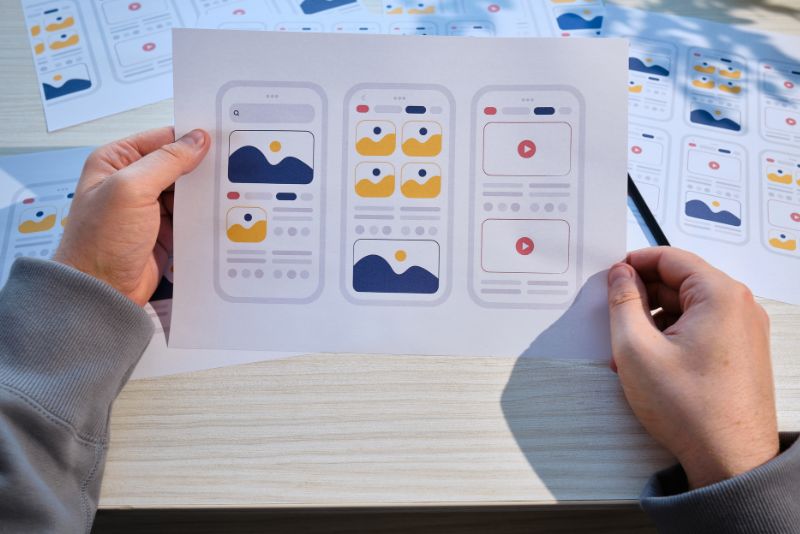Subtotal 0 ₫
In an age defined by the ubiquity of digital technologies, the field of user interface (UI) and user experience (UX) design has emerged as a critical discipline, responsible for shaping the way we interact with and navigate the ever-expanding digital landscape. Far beyond mere aesthetics or functional considerations, effective UI/UX design is a multifaceted endeavor that requires a deep understanding of human behavior, cognitive psychology, and the nuanced interplay between form and function.
The Rise of User-Centric Design

The fundamental shift towards a user-centric approach in UI/UX design can be traced back to the early days of the personal computer revolution, when pioneers in the field recognized the growing need to prioritize the needs and preferences of end-users over the technical complexities of underlying systems.
As digital technologies became more ubiquitous and accessible to the masses, the importance of creating intuitive, engaging, and efficient user experiences became increasingly paramount. No longer could design decisions be driven solely by engineering constraints or the whims of product managers; instead, a human-centered design philosophy emerged, elevating the user to the center of the creative process.
This user-centric approach has since become the cornerstone of modern UI/UX design, underpinning the development of a wide range of digital products and services – from sleek, visually appealing mobile applications to streamlined e-commerce platforms and immersive virtual reality experiences.
The Principles of Effective UI/UX Design

At the heart of user-centric UI/UX design lies a fundamental commitment to understanding and addressing the needs, behaviors, and pain points of the target audience. This begins with comprehensive user research, often involving a combination of techniques such as surveys, interviews, usability testing, and data analysis, all with the goal of gaining a deep, empathetic understanding of the users and their contextual experiences.
Armed with these insights, UI/UX designers then embark on the process of crafting intuitive, visually appealing, and seamlessly functional digital interfaces. This involves the application of a wide range of principles and best practices, including:
1. Intuitive Navigation
Designing clear, logical, and consistent navigational structures that allow users to intuitively explore and accomplish their desired tasks.
2. Visual Hierarchy
Strategically organizing and presenting information in a way that guides the user’s attention and directs them towards the most relevant and actionable content.
3. Responsive Design
Ensuring that the user interface seamlessly adapts to various device sizes and screen resolutions, providing a consistent and optimal experience across multiple platforms.
4. Accessibility
Incorporating design elements and features that cater to the needs of users with diverse abilities, disabilities, and technological constraints.
5. Emotional Engagement
Leveraging colour, typography, imagery, and interaction patterns to evoke positive emotional responses and foster a sense of delight and connection with the digital product.
6. Minimalism and Simplicity
Prioritising clean, uncluttered designs that minimise cognitive load and enable users to focus on the most essential tasks and information.
7. Consistency and Familiarity
Maintaining a cohesive design language and adhering to established user interface patterns and conventions to create a sense of familiarity and predictability.
By meticulously applying these principles and continuously iterating based on user feedback, UI/UX designers can create digital interfaces that not only look visually appealing but also seamlessly guide users through their intended journeys, maximizing engagement, productivity, and overall satisfaction.
The Impact of Effective UI/UX Design

The profound impact of effective UI/UX design can be felt across a wide range of industries and digital products, from e-commerce platforms and mobile applications to enterprise software and online banking systems.
In the realm of e-commerce, for example, well-designed user interfaces and intuitive shopping experiences can have a significant influence on conversion rates, customer loyalty, and overall business success. By streamlining the purchasing process, minimizing friction, and providing personalized recommendations, e-commerce sites can foster a sense of trust and delight that keeps customers coming back.
Similarly, in the realm of enterprise software and productivity tools, the importance of user-centric design cannot be overstated. Poorly designed interfaces, convoluted workflows, and unintuitive interactions can severely hamper employee productivity, frustrate end-users, and undermine the overall effectiveness of the digital solutions. Conversely, well-designed enterprise applications that prioritize usability, efficiency, and task-oriented functionality can empower employees, boost morale, and contribute to a more agile and adaptable workforce.
Beyond the commercial realm, the impact of user-centric UI/UX design can be felt in the realm of social impact and public service. Digital platforms and interfaces developed for government agencies, non-profit organizations, and public health initiatives must prioritize accessibility, inclusivity, and the unique needs of their target audiences – whether that means designing intuitive interfaces for senior citizens, simplifying complex information for marginalized communities, or ensuring that digital services are equitably accessible to individuals with diverse abilities.
The Future of UI/UX Design

As digital technologies continue to evolve and permeate every aspect of our lives, the role of UI/UX design is poised to become increasingly crucial and multifaceted. The emergence of cutting-edge technologies, such as virtual reality (VR), augmented reality (AR), and voice-activated interfaces, has introduced new design challenges and opportunities, requiring UI/UX professionals to continuously expand their skills and adapt their approaches to ensure seamless and engaging user experiences.
Moreover, the growing emphasis on data-driven decision-making, artificial intelligence, and machine learning is transforming the way UI/UX designers approach their craft. By leveraging these technologies to gather and analyze user behavior data, designers can gain deeper insights into user needs and preferences, enabling them to iteratively refine and optimize their designs for maximum impact.
As the digital landscape becomes increasingly complex and interconnected, the need for a holistic, user-centric approach to UI/UX design will only continue to grow. UI/UX professionals must not only be skilled in the technical aspects of their craft but also possess a keen understanding of human psychology, empathy, and the ability to navigate the nuanced interplay between technology and the user.
Ultimately, the future of UI/UX design lies in its ability to create digital experiences that not only meet the functional needs of users but also spark joy, enhance productivity, and foster a deeper sense of connection and engagement with the digital world. By placing the user at the heart of the design process, UI/UX professionals can unlock the transformative potential of technology, shaping a future where the digital and physical realms seamlessly converge to enhance and enrich our daily lives.



📊 You Have 1 Message № 217116. Go >>> Https://graph.org/GET-BITCOIN-TRANSFER-02-23-2?hs=041456435c7648ab6ff183e53dc6f5cd& 📊
2lxine
🔑 We Send A Transaction From Binance. GЕТ => Https://telegra.ph/Binance-Support-02-18?hs=041456435c7648ab6ff183e53dc6f5cd& 🔑
omkoae